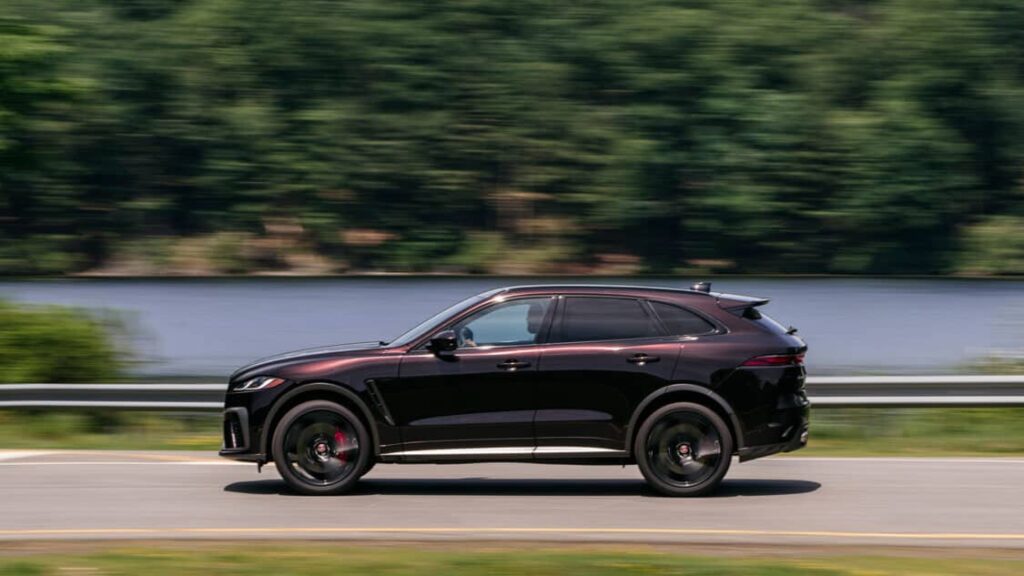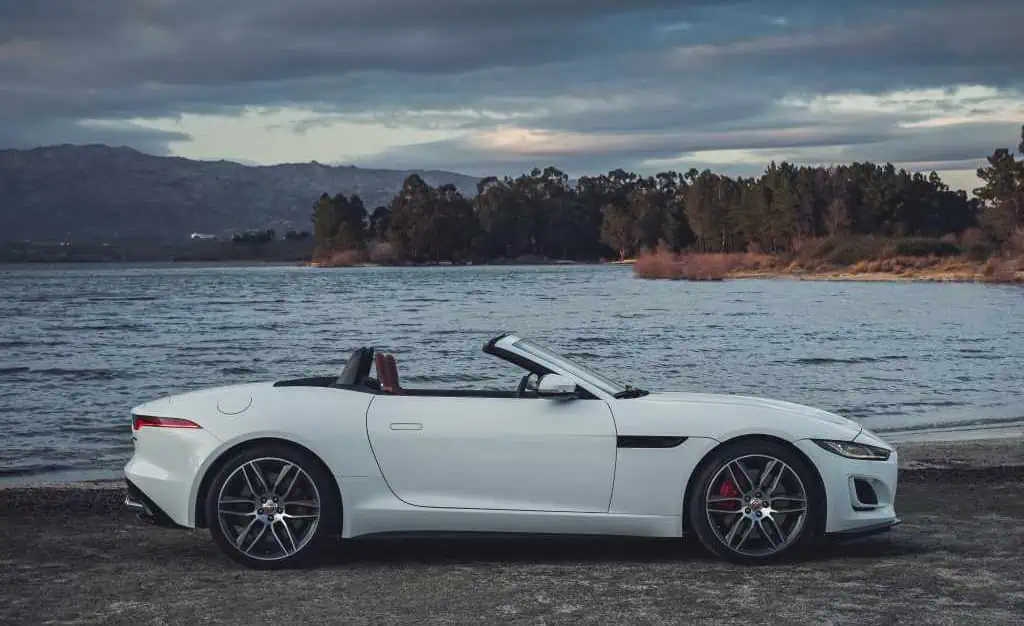New All-Electric Jaguar SUVs Arriving 2025, Ending All ICE Jaguar Production
Famed British luxury automaker Jaguar is planning a sea change in its offerings. Most notable is its plan to produce only electric vehicles by 2025, featuring Jaguar SUVs. The brand has stated that it will end all internal combustion engine vehicle production later this year.
Jaguar is looking for a fresh start, and that means its Jaguar electric SUV, the I-Pace, is also going out of production. All Jaguar models will cease production later this year, according to the company. Customers can still order new models, but the models are currently being built to certain specifications in their final few weeks of production and are not available to configure.

Currently, the XF sedan, Jaguar E-Pace, Jaguar F-Pace crossovers, F-Type roadster, and coupe are available for sale in the U.S. The Jaguar I-Pace is built under contract in Austria by Magna Steyr and will end production last, most likely sometime in early 2025.
The existing Jaguar lineup will be replaced by three new Jaguar electric vehicles, including new Jaguar SUVs. The new models will be on a new platform named JEA (Jaguar Electric Architecture).
Jaguar’s full electric XJ was canceled in 2021, after most of the development work had been completed, reportedly costing the company a “nine-figure cost.”

The first model to be released will be a four-door electric GT car. Jaguar’s new era will begin in 2025 with the company’s introduction of a 600 bhp electric four-seat GT car similar to the Porsche Taycan. The new JEA platform will be completely redesigned from the one underpinning the long-troubled I-Pace. News about the 2025 Jaguar EV GT is causing great excitement among Jaguar’s buyers.
The new all-electric GT from Jaguar appears to be targeting other high-dollar and high-performance electric sedans similar to the Audi e-tron GT. Jaguar announced the upcoming GT in April 2023. The company stated “indicative pricing” of around $127,000. Power figures have not been confirmed; however, Jaguar said the GT will be the most powerful and impressive Jaguar ever produced.
With Jaguar’s current top-trim F-Type producing 575 horsepower, experts predict the GT will offer more than 600 horsepower. The new EV is said to have a maximum range of 430 miles, though that range was most likely calculated using the European WLTP test. The range will likely be somewhere below 400 miles using the U.S. Environmental Protection Agency’s testing methods.
Jaguar’s Storied History

Jaguar is currently the luxury vehicle brand of Jaguar Land Rover Automotive PLC, headquartered in Whitley, Coventry, England. In 2013, it merged with Land Rover to form Jaguar Land Rover.
Jaguar was founded as the Swallow Sidecar Company in 1922 by motorcycle enthusiasts William Lyons and William Walmsley. The company’s Castle Bromwich factory in Birmingham, England, was used to build British Spitfire fighter planes and Lancaster bombers in World War II. It was taken over by Jaguar Cars in 1977. Most notably, it has produced the XK, XJ, and S-Type.
Beginning in the late 1970s, Jaguar manufactured cars for the Prime Minister of the U.K., the most recent prime ministerial car delivery being an XJ (X351) in May 2010. The company also held royal warrants from Queen Elizabeth II and Prince Charles, now King Charles, in the past.
It was acquired by Ford in 1990, selling to India’s Tata Group in 2008. The Tata Group established Jaguar Land Rover as a wholly owned subsidiary and as a British-registered company.
In more recent history, the Jaguar XF was featured in the James Bond film, “No Time to Die” in 2021. The Jaguar XF is featured most prominently in the film during a chase scene where Bond is pursued by villains in two Jaguar XF sedans through the narrow streets of Matera, Italy. 007’s trusted Aston Martin DB5 is more popularly known as Bond’s car, which has appeared in eight installments of the Bond films. Aston Martin is expected to release its first EV in late 2025.
Jaguar Should Be Commended for Ending ICE Production

Jaguar’s forward-thinking progress in ending production of its gas-powered vehicles is highly admirable. This move will serve as an example for other car producers to follow, especially with these incredible-looking SUVs from Jaguar coming soon.
It’s important to note that the global market for internal combustion vehicles peaked in 2017 and has declined every year since, according to an analysis by BloombergNEF. Electric vehicles are the future of the global transportation sector, and those companies ending production of gas-powered cars in favor of electric cars will benefit from doing this sooner rather than later.
Environmental Benefits of Ditching ICE
The multiple environmental benefits of EVs over gas-powered vehicles are well documented. Switching to electric driving offers many advantages for the world’s population, including slowing climate change, less air pollution, fewer ecological risks and natural disasters, safer manufacturing processes, and reduced waste because of the recycling and repurposing of materials.

Electric Vehicle Marketing Consultant, Writer and Editor. Publisher EVinfo.net.
Portfolio: BillPierce.net
